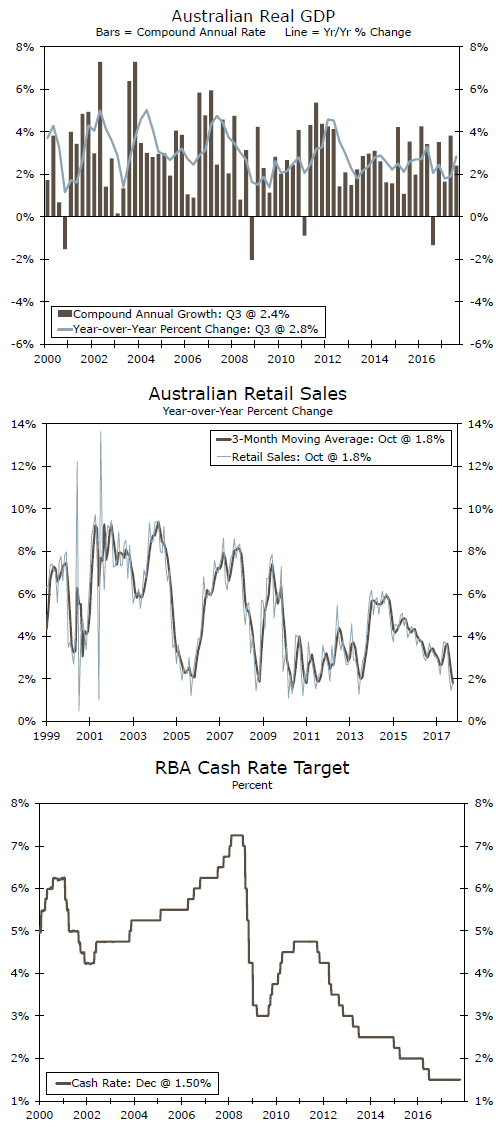Yearly GDP growth picked up in the third quarter but was a bit below market expectations. Consumer spending was soft, reflecting spotty retail sales during the quarter.
Rise in Investment, But Where is the Consumer?
The Australian economy expanded 0.6 percent over the quarter (not annualized), just shy of market expectations of 0.7 percent. That said, it still marked an improvement in yearly growth to 2.8 percent, which points to the continued expansion of the Australian economy.
A lead driver of third quarter growth was the improvement in investment spending. Increasing 1.8 percent on the quarter (not annualized), this rise in fixed investment is encouraging for the sector as it continues to improve this year. This print marks the second-fastest growth rate going back to 2012. Fixed investment contributed 1.8 percentage points to the headline quarterly figure, positioning it as a lead driver of the third quarter growth rate in Australia. Third quarter growth also was boosted by a modest buildup in inventories, contributing 0.7 percentage points to headline GDP.
The weak print in private consumption could reasonably have been expected given the muted retail sales figures over the quarter. Having grown at 0.1 percent, this marks the weakest growth rate in household spending since 2008. Although Australian households are strapped with high levels of debt, which could restrain spending going forward, we do not expect such low levels of household spending to persist in the fourth quarter. October retail sales figures jumped 0.5 percent, signaling potential improvement into the fourth quarter. Weak retail figures are, in part, a continued reflection of subdued wage growth within Australia. Although we have seen a continuous decline in the unemployment rate, the tightening of labor market conditions are not being transferred to an increase in income.
RBA Still on Hold…For Now
As was broadly expected, the Reserve Bank of Australia kept its cash rate on hold at its December meeting. RBA Governor Philip Lowe noted improvement in the labor market and as well as his expectation for the soft wage growth dynamic to eventually give way to a lift in wages and broader inflation over time. The text of the accompanying statement was upbeat on the economy, particularly the outlook for the non-mining sector. "The outlook for non-mining business investment has improved further, with the forward-looking indicators being more positive than they have been for some time."
A rate increase is not yet in the cards in Australia, but if inflation firms in the manner describe by Governor Lowe, signals of eventual tightening may creep into the discussion in 2018. In the meantime, a measured but broad improvement in global growth and higher commodity prices should be supportive of the Australian currency. Meanwhile, as we get into 2018, renewed trend weakness in the greenback and eventual signals from the RBA on rate hikes should signal moderate gains for the Aussie dollar.















